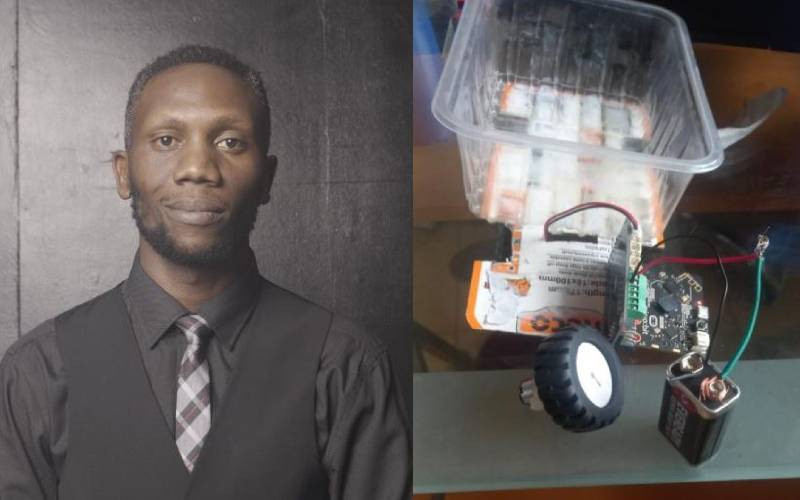
Briefly introduce yourself
I am a professional in business development and go-to-market-engineering within edtech, agtech, and insurtech sectors. Our current edtech offering is a coding and robotics curriculum, where we programme recycled robots, emphasising themes of conservation and sustainability.
You turn waste materials into robotics for training purposes, tell us about this.
Yes, my business, mAIk offers a Python-based robotics and coding curriculum where learners engage in robotics using affordable and reusable materials. This approach is inspired by the capabilities of the BBC micro:bit chip, which is inexpensive, accessible, and easy to use.
We believe that when students learn how to repurpose their snack containers, bottles, tins, and other disposable materials, they can scale their ideas to an industrial level. This enables them to create solutions across various sectors including agriculture, education, construction, environmental protection, medicine, and more.
How exactly do you do it?
Keep Reading
- Endometriosis: Understanding, diagnosing and treating the condition
- Clinical officers: What government must do for us to return to work
- Research uncovers link between eye changes and chronic kidney disease
- Understanding HIVAIDS testing and counseling standards in Kenya
We combine easily accessible scraps like snack packaging and other items, to create robot models such as trucks, human and animal figures, cars, helicopters, and more. We use everyday household and school waste preferring materials that children produce themselves, like biscuit boxes, milk cartons, ice cream containers, bottles, and other commonly discarded items. This reinforces the theme of recycling and reusing at their level.
Our robotics kit includes the micro:bit, a power source, batteries, wheels, motors, micro servos, and accessories. Learners draw what they imagine then we create the robot and code it to move as designed. The creative process keeps children engaged, and when they tire of one robot, they can disassemble it and create a new one using the same or additional components. The robots are controlled by phone or computer.
How do you get money from this venture and how much?
We generate revenue by selling robots and robotic kits to schools where we introduce the mAIk curriculum, as well as to individuals who want them for their children at home. We are launching these packages in schools in the academic year 2025, so it’s too early to share our financial traction. However, we project generating around one million shillings a month in recurring revenue from subscriptions and robot sales within 2025.
Our subscription model ranges between Sh4,500 and Sh8,500 per term per student. Our holiday and weekend workshops start at Sh3,000 per month per student. Package prices vary depending on whether the learners use individual robots or share them in groups.
Why do you think robotics, AI is becoming a trend currently?
AI, Machine Learning, and Robotics are the future of work, production, and societal organization. Children in the developed world are already making significant strides, and it’s crucial that we support similar opportunities for children in the global south to ensure they remain competitive in the future. It is essential not only for them to thrive, but also to survive the environmental, economic, agricultural, medical, educational, and other challenges that lie ahead.
Where are you based and how are you planning to expand your reach?
We are based in Nairobi but have a network across the country. The developer who writes the code is my good friend Tamir who works from Israel and distributes the same curriculum there. We host online classes and also offer the curriculum physically in schools. Our vision is to create a comprehensive coding and robotics curriculum that is both simple and affordable for parents from all walks of life. We aim to establish a self-paced platform where learners can log in and learn how to build robots from easily available materials and components around them. By the end of the year, we plan to expand to every county and become the most widely used robotic and coding platform.
Your parting shot?
Technology is evolving faster than we ever saw in sci-fi movies in the 90s. I would encourage every parent to ensure their child has a foundational understanding of artificial intelligence, machine learning, coding, and robotics. This knowledge will make the difference between those who thrive and shape the world and those who merely survive, watching it take form from the sidelines.





